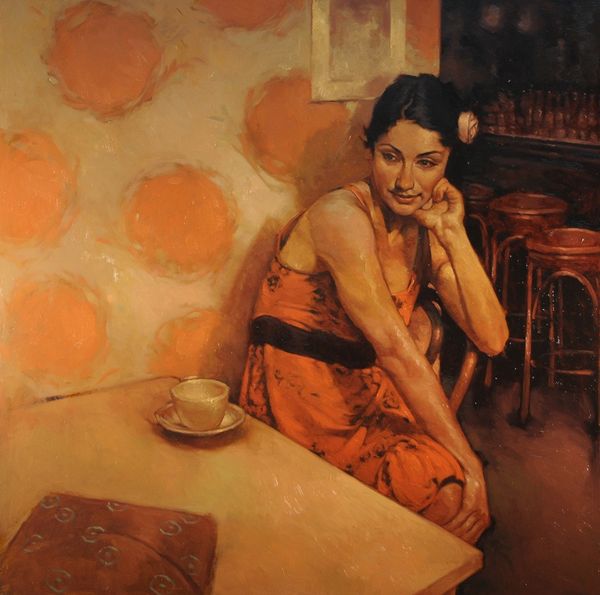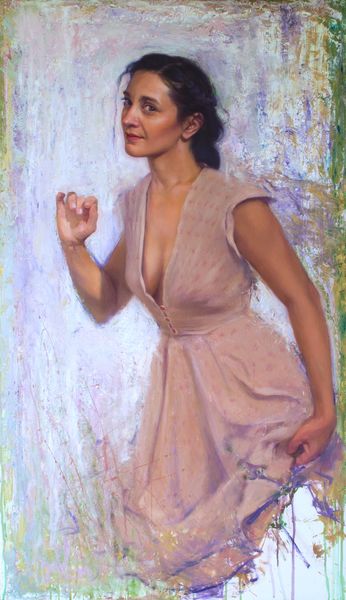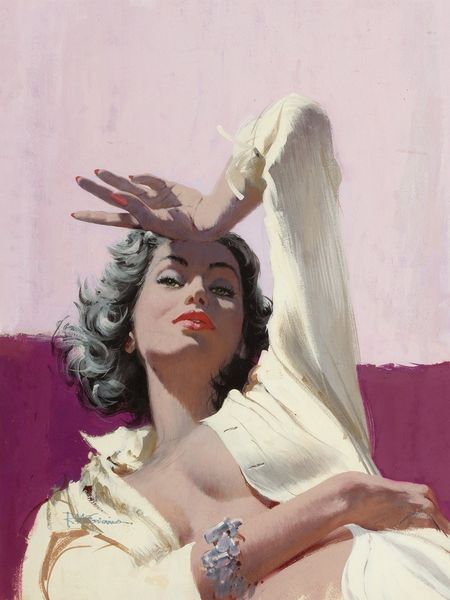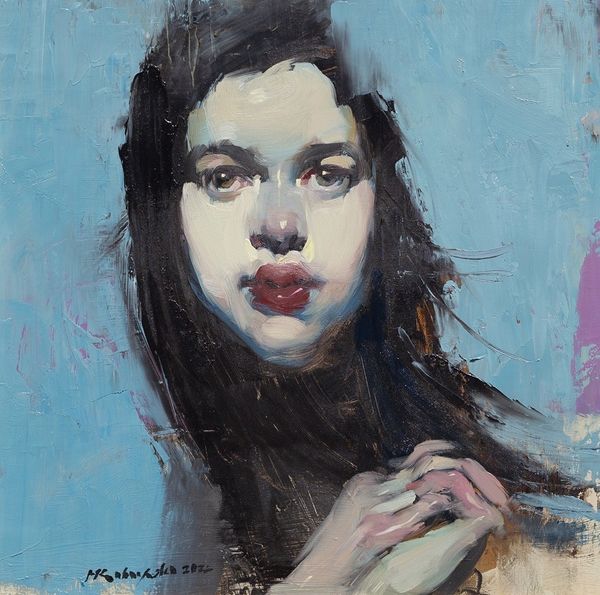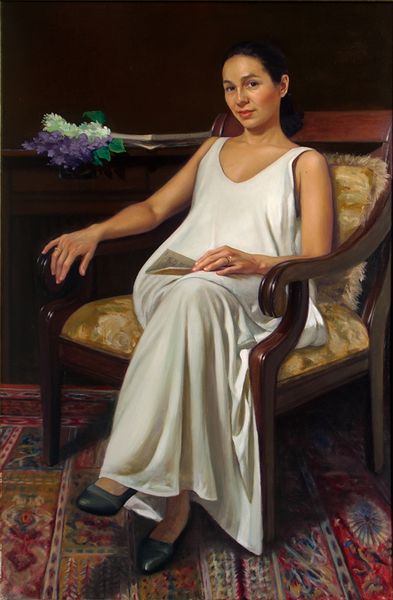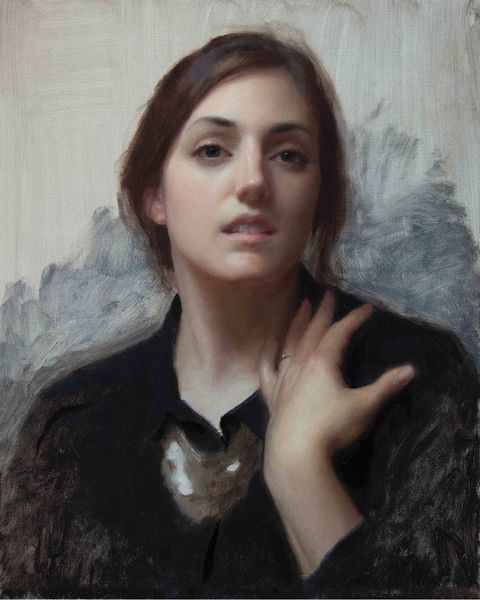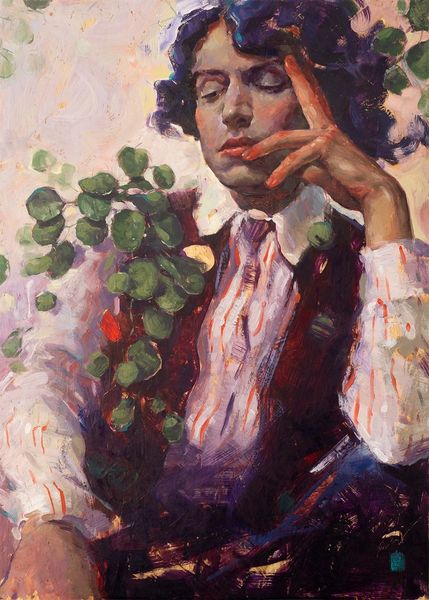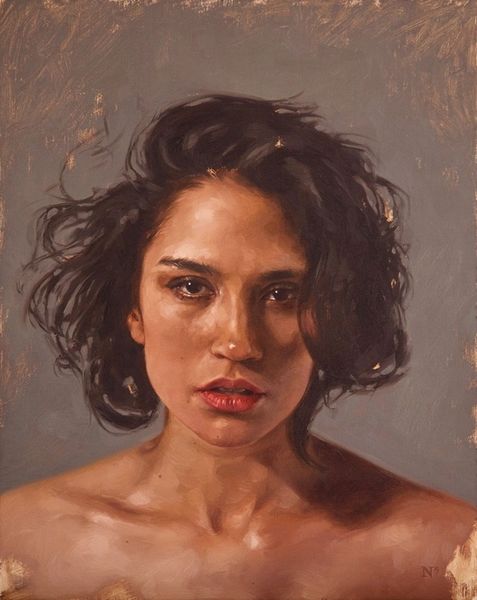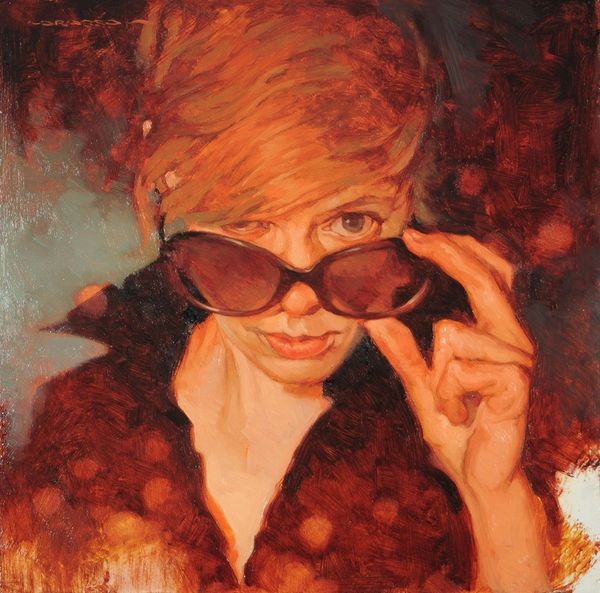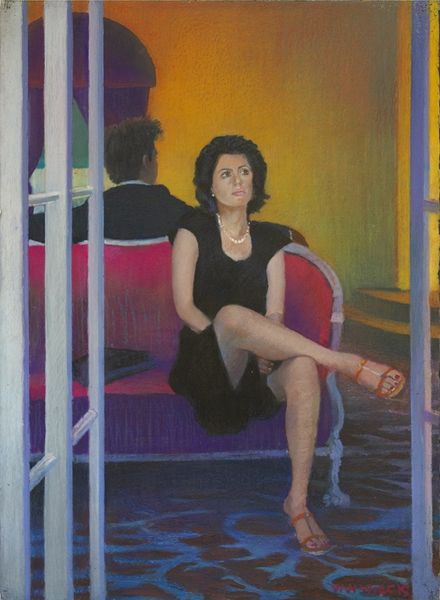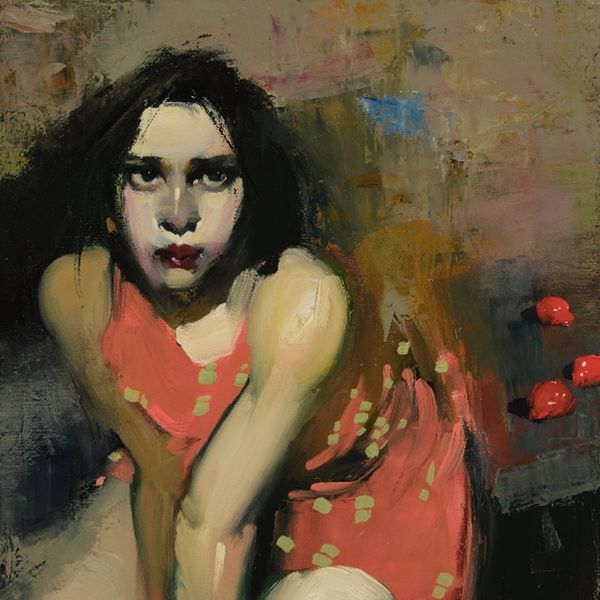
painting, oil-paint
#
portrait
#
figurative
#
contemporary
#
portrait
#
painting
#
oil-paint
#
realism
Copyright: Modern Artists: Artvee
Curator: Here we have Daniel Greene's "Telephone Bid \u2013 Winslow Homer," created in 2012. It's a compelling piece, steeped in contemporary realism and the enduring tradition of portraiture. Editor: The first thing that strikes me is the telephone's cord, spiraling down like some odd industrial vine. It's such a contrast with the soft, almost hazy texture of the portrait itself, which is done with oil paints. Curator: Absolutely, that juxtaposition of the contemporary subject – using the telephone, bidding – with a style reminiscent of classical portraiture invites interesting questions. What is being bid for? Is it related to Winslow Homer himself? Greene positions art as a commodity, and he highlights the cultural significance of auction houses. Editor: The artist's use of oil paint really grounds this in a longer history. Think of the labor, the build-up of pigment – and then contrast that to the almost throwaway object she is holding – the telephone – and what the phone has represented to labor in the last years: outsourcing, digital precarity and flexibility. The portrait freezes a moment of intense capitalist exchange. Curator: True, the painting reflects the evolving role of women in these transactional spaces, where phone bids play a crucial part in making financial and cultural economies turn. What I find compelling is the portrait of the woman, rendered in this delicate style. It asks us to look at the individual within that socio-economic framework, doesn't it? How she's caught, like the artist's brush has caught her. Editor: She seems… composed. Maybe wary. The materiality of the portrait, and that specific type of realism that harks back to, as you were saying, to classical portraiture but in its execution also mirrors impressionistic techniques, all draw the eye – a sort of 'look but don’t touch' sensation for the viewer. Curator: And isn’t that central to the role of portraiture? It’s a capture, but also a construction of identity. It freezes her in time and space. A piece for conversation. Thank you! Editor: Fascinating piece, forcing you to acknowledge both tradition and how that clashes with technology. Thanks for sharing your view!
Comments
No comments
Be the first to comment and join the conversation on the ultimate creative platform.

